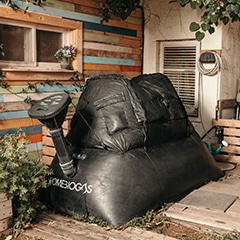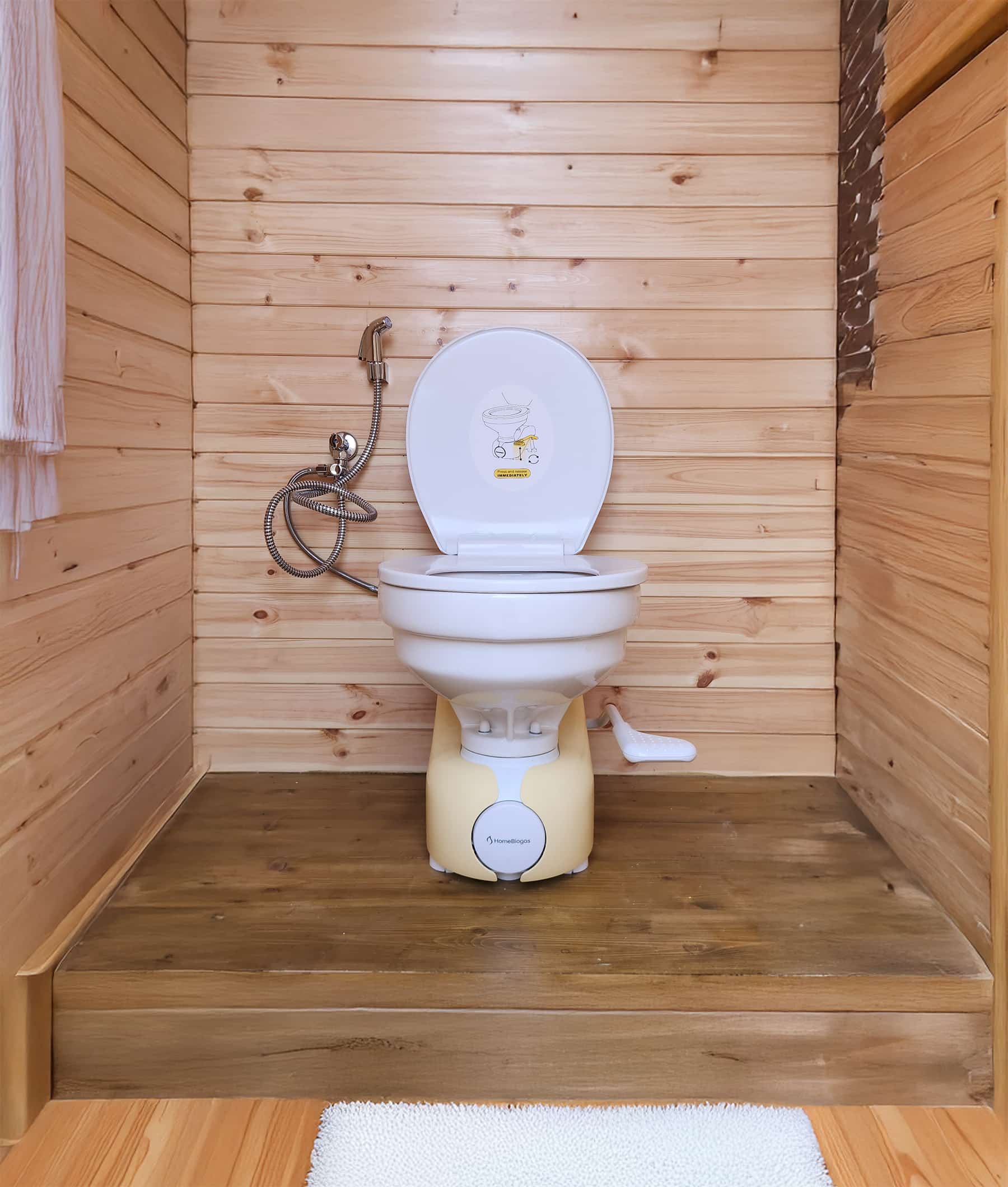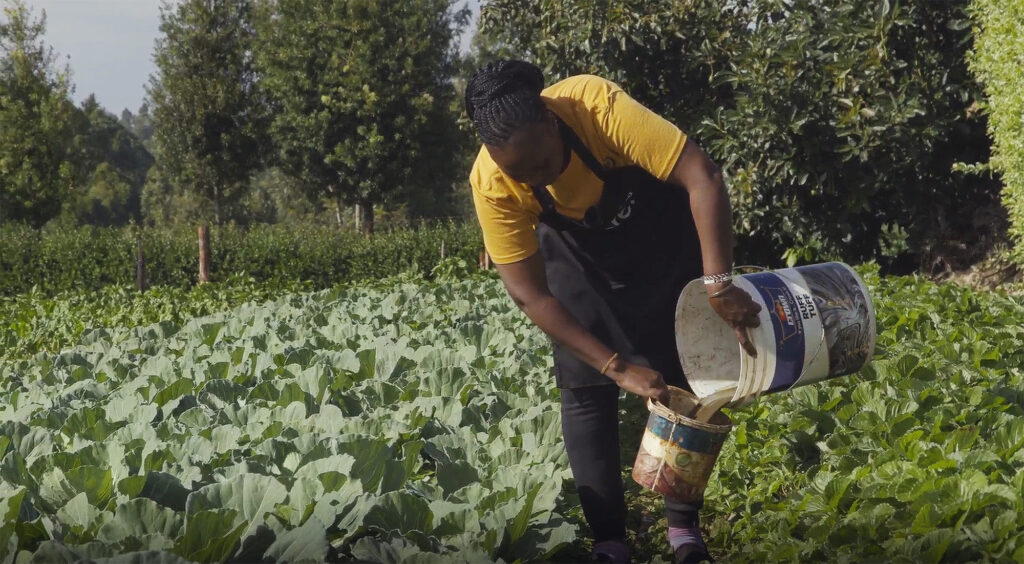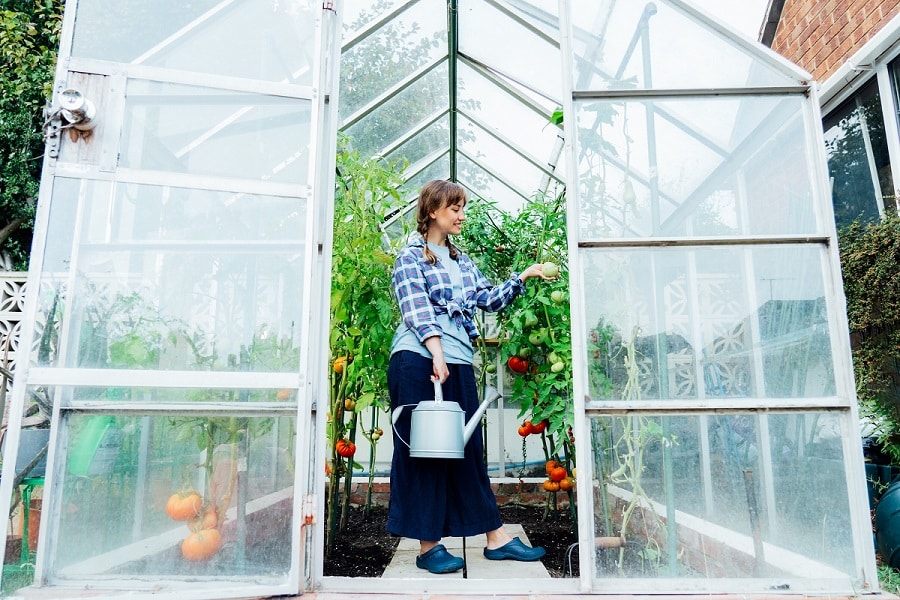
Exploring the Concept of Self-Sustainable Living
Self-sustainability is a holistic approach to meeting your needs while minimizing environmental impact. Simply put, you build a harmonious relationship between your needs and the environment.
When you opt for a self-sustainable lifestyle, you gradually change your habits to align your actions with various systems in the ecosystem, such as energy, water, food, waste management, and more.
In the long run, you create systems and practices that can be maintained indefinitely, with an understanding of the need for ongoing resilience in the face of changing circumstances.
Importance of self-sustainable living for the environment
Self-sustainability offers practical solutions to environmental challenges and creates a more resilient planet for future generations.
This lifestyle challenges the prevailing culture of overconsumption and waste generation, encouraging the adoption of self-sustainable practices in daily activities — from food production to transportation to energy consumption habits.
Everything starts with promoting conscious consumer choices. When you shift toward a self-sufficient lifestyle, you learn to prioritize durable, eco-friendly products and engage in recycling, upcycling, and composting. These practices minimize the risk of air, water, and soil pollution.
Moreover, transitioning from fossil fuels is among the most popular self-sustainable living ideas. As individuals and communities reduce their reliance on fossil fuel-based energy, they contribute to the decarbonization of the energy sector. This shift mitigates greenhouse gas emissions and fosters the development of clean and sustainable energy systems.
12 Practical steps on the way to self-sustainable living
Grow your food
The goal is to cultivate various fruits, vegetables, and herbs for a constant supply of fresh, nutritious produce and greater control over food quality. Plus, this gained independence fosters self-reliance and resilience in the face of potential food shortages or price fluctuations.
How to get started with eco-farming:
- Assess your space — it can be your backyard, a balcony, or a windowsill. Consider the amount of sunlight the area receives and its accessibility for watering.
- Start small — depending on your space, you can begin with one or more easy-to-grow plants like herbs, lettuce, or tomatoes.
- Learn the best planting times, watering requirements, and soil preferences.
- Amend the soil with compost or organic matter to improve its fertility and drainage. If you don’t have access to soil, consider container gardening using potting mix.
- Water your plants regularly, monitor for pests and diseases, and take appropriate measures to address any issues.
Grow a staple crop
Besides fruit and vegetables, you’ll need a staple crop to achieve self-sustainability and food security. Consider your nutritional requirements and calculate the yield required to sustain you throughout the year based on your family’s daily consumption and factors like storage methods, preservation techniques, and crop yields.
How to start growing your staple crop:
- Identify the crop you want to grow.
- Assess factors such as climate, soil conditions, space, and water availability to ensure you can cover your needs.
- Learn about cultivation requirements and the crop’s growing season to ensure it’s suitable for your region.
- Start small and gradually expand your crop production as you gain experience and knowledge.
Save seeds
Saving seeds is an essential practice for self-sustainable living. It allows you to preserve heirloom and open-pollinated varieties, maintain genetic diversity, and reduce dependence on commercial seed sources. It also enables you to select and adapt seeds to suit your local growing conditions.
How to get started:
- Let a few fruits or vegetables ripen on the plant until they are fully mature and begin to show signs of natural decay.
- Remove the seeds from the fruit or vegetable, separating them from any pulp or flesh.
- Properly clean and dry the seeds.
- Use airtight containers such as glass jars or envelopes to protect the seeds from moisture, light, and pests.
- Store the seeds in a cool, dry, dark place to maintain viability.
Raise backyard livestock
Depending on your space, consider keeping chickens for eggs, goats for milk and meat, rabbits for meat, or bees for honey and pollination. Pigs can also be raised for meat.
How to get started with backyard livestock:
- Research local regulations and zoning restrictions that may apply to your area.
- Ensure you have adequate space and the necessary permits if required.
- Connect with a local farm or homesteading community to learn best practices and safety measures.
- Install sturdy and secure fencing to create a safe and contained animal space.
- Provide suitable shelter, bedding, proper ventilation, and a clean water supply for your livestock.

Learn to preserve food
Food preservation reduces your dependence on store-bought produce. It involves various methods to ensure a continuous food supply, such as canning, freezing, drying, fermenting, and pickling. Preserving food at its peak freshness helps retain nutrients, minimizing nutrient loss over time. Moreover, it can reduce food waste by preventing spoilage and extending the usable lifespan of perishable items.
How to get started with food preservation:
- Learn about the best food preservation methods for each type of food you need to conserve.
- Buy canning jars, freezer-safe containers, dehydrators, or fermentation vessels.
- Follow proper sanitation practices to maintain food safety throughout the process — wash the produce, sanitize your hands, the equipment, and all surfaces, and follow the recommended processing guidelines for each method.
- Label and organize your preserved food to keep track of the products and their respective shelf lives.
- Store the food in a cool, dry place after preservation.
Reduce water consumption
We use approximately 10 billion tons of freshwater daily, and the water demand continues to increase. Our habits strain freshwater sources, leading to water scarcity, particularly in arid regions or during periods of drought. The more water you can save, the better for the ecosystem and biodiversity.
How to get started:
- Adopt water-saving habits like turning off the faucet while brushing your teeth, taking shorter showers, and only running full loads in your dishwasher and washing machine.
- Install low-flow fixtures that reduce water usage without compromising functionality.
- Repair any leaks promptly to prevent wastage.
- Install dual-flush toilets or another sustainable toilet to reduce water usage per flush.
- Use a drip irrigation system to water directly to the plant roots, minimizing evaporation and runoff.
Collect rainwater
Rainwater is great for irrigation, gardening, and household chores, being an essential backup supply during water scarcity or emergencies. The secret is to maintain your rainwater collection system clean so the water remains safe and of good quality. Also, if you plan to use it for cooking or drinking, you’ll need a filtration and purification system to ensure it meets safety standards.
How to start collecting rainwater:
- Pick a rainwater collection system that suits your needs — standard options include rain barrels, cisterns, or larger storage tanks.
- Determine the best location for the system, considering factors like proximity to downspouts, accessibility, and surface stability.
- Install a rainwater diverter or gutter system to direct water from the roof into your collection container.
- Install an overflow outlet to prevent overflow during heavy rain.
- Keep your collection container clean, sturdy, and properly sealed.
Make your home energy-efficient
Audit your house to find what wastes energy and fix everything that prevents you from having an energy-efficient home. You can save up to 60% of your current energy consumption. Not only will these changes lead to a self-sufficient lifestyle, but they’ll also reduce your bills significantly.
How to get started:
- Seal air leaks, such as gaps and cracks around windows, doors, and other openings, to prevent drafts and heat loss.
- Improve insulation in walls, roofs, and floors to retain indoor temperature.
- Upgrade to energy-efficient appliances and lighting — LED or CFL bulbs are more efficient than traditional incandescent bulbs.
- Install smart thermostats to control and schedule temperature settings.
- Set a maintenance schedule for HVAC systems.
Install solar panels
Practical self-sufficiency involves having a source of green energy to power your household. Solar panels harness the sun’s energy and generate clean and renewable electricity, reducing your reliance on fossil fuels, lowering your carbon emissions, and potentially leading to long-term cost savings on utility bills.
How to get started:
- Evaluate your property’s available space and sunlight exposure — a south-facing roof or an area with minimal shading is optimal for maximum solar energy capture.
- Find a reputable solar panel provider or installer who can guide you.
- Install the panels on your roof or ground, connecting them to an inverter that converts the direct current (DC) energy into alternating current (AC).
- Hire a professional to inspect your system and connect it to the grid.
- Monitor your solar panel system’s performance regularly.
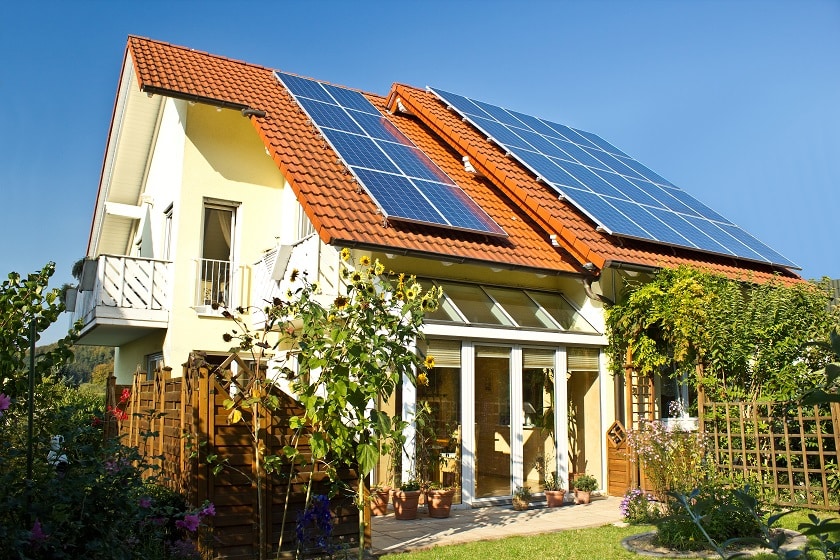
Make your cleaning supplies
Eliminate harsh chemicals from your home and substitute them with homemade cleaning products that keep your family safe, protect the environment, reduce plastic waste, and help you cut cleaning costs.
How to get started:
- Gather essential ingredients like white vinegar, baking soda, lemon juice, castile soap, and essential oils.
- Collect reusable spray bottles, glass jars, and labeled containers to store your products.
- Find reliable sources for recipes and formulations for various cleaning solutions — the University of Arkansas, for example, provides recipes for DIY green cleaners.
- Experiment with different recipes and adjust ingredient ratios to find what works best for your cleaning needs.
Use composting technology
Composting technology involves the controlled decomposition of organic waste materials, such as kitchen scraps, yard trimmings, and other biodegradable matter, into nutrient-rich compost. This process not only diverts waste from landfills but also produces a valuable resource to enrich the soil, enhance plant growth, and reduce the need for synthetic fertilizers. You can do backyard composting, vermiculture (using worms), or compost tumblers.
How to start composting at home:
- Educate yourself on the basics, including the materials suitable for composting, the ideal carbon-to-nitrogen ratio, and the proper maintenance practices.
- Buy or build a compost bin or delimitate an area in your backyard for a compost pile.
- Collect organic waste materials from your kitchen and yard, ensuring a balanced mix of “green” (nitrogen-rich) and “brown” (carbon-rich) materials.
- Regularly monitor and maintain the compost pile by turning or aerating it to provide oxygen.
Eliminate waste
Committing to producing less waste is crucial to a self-sufficient, sustainable lifestyle. By being more intentional about what you discard, you reduce your environmental impact and reach resource efficiency. The secret is not to let the task overwhelm you. Set realistic goals around waste management and celebrate gradual progress to stay motivated.
How to get started:
- When you decide to buy something, reduce consumption and pick durable and high-quality products that have a longer lifespan.
- Reuse items whenever possible by repairing, repurposing, or donating them.
- Implement an efficient recycling system that separates recyclable materials and ensures they are properly recycled.
- Explore creative ways to upcycle and repurpose items instead of throwing them away.
- Compost all the organic waste.
How to cover your basic needs in self-sustainable living
Embarking on a self-sustainable living journey is a transformative experience that demands continuous effort. The steps outlined above highlight the key areas that require your attention: food production, water management, energy generation, and waste management. And it’s important to note that shifting to a self-sustainable lifestyle is a long learning process.
While some aspects of self-sustainable living may come naturally to you, there will inevitably be areas where you’ll need to seek guidance and support from the community. Engaging with like-minded individuals, joining local sustainability groups, and participating in workshops or educational programs can provide valuable insights and knowledge-sharing opportunities.
As you embark on your journey, don’t be discouraged by setbacks or initial uncertainties. Self-sustainability is a dynamic and evolving process involving experimentation and learning from successes and failures. Through trial and error, you’ll gradually discover which practices and techniques work best for you and your unique circumstances.
Tools and solutions for self-sustainable living
Tools will vary with your skills and the aspects of sustainable practices you prioritize. Here are some essential tools to cover the basics:
- For gardening: high-quality hand tools like shovels, rakes, hoes, pruning shears, and watering cans to help you prepare soil, plant seeds, maintain crops, and harvest produce. Additionally, consider acquiring a wheelbarrow or garden cart for transporting heavy materials and compost.
- For preserving food: canning jars, pressure cookers, dehydrators, fermentation vessels, freezer-safe containers, and vacuum sealers.
- For harvesting rainwater: rain barrels, gutters, downspouts, and filters.
- For composting: compost bins, tumblers, or vermicomposting setups with worms. Tools like pitchforks or compost turners make it easier to mix and aerate the compost pile.
- Energy-efficient appliances and devices: energy monitoring devices, energy-efficient refrigerators, washing machines, LED lighting, programmable thermostats, power strips and timers for electricity usage control, and low-flow faucets, showerheads, and toilets to minimize water usage.
- Solar panels and renewable energy solutions: solar panels, wind turbines, or hydropower systems.
HomeBiogas solutions for self-sustainable living
HomeBiogas solutions bring you one step closer to a self-sufficient lifestyle by enabling you to produce biogas for cooking. These systems use anaerobic digestion to turn organic waste, such as food scraps and gardening residue, into a renewable energy source, reducing your dependence on fossil fuels and contributing to a more sustainable lifestyle.
One of the critical advantages of HomeBiogas systems is their eco-friendliness and positive impact on the environment. These systems help reduce methane emissions from landfills by converting organic waste into biogas. Additionally, using biogas as a cooking fuel eliminates the need for firewood or fossil fuels, reducing deforestation and carbon dioxide emissions.
HomeBiogas systems are designed to be user-friendly and easy to install. With straightforward instructions and minimal maintenance requirements, homeowners can easily set up and operate these systems without specialized knowledge or skills. Whether you’re an experienced gardener or new to sustainable living practices, HomeBiogas systems offer a practical solution that you can easily integrate into your daily routine.
HomeBiogas also allows for exploring other waste streams besides food scraps and gardening residue. For instance, the HomeBiogas Bio-toilet kit converts human waste into biogas. This innovative system taps into human waste’s energy potential, further enhancing self-sustainability. By adopting such a comprehensive approach to waste management, homeowners can effectively minimize waste generation, promote resource recovery, and maximize energy output.

Is self-sustainable living possible in the modern world?
Yes, self-sustainable living is possible in the modern world.
While achieving complete self-sufficiency may be challenging, it’s feasible to come close to it and significantly reduce our reliance on external systems. After all, self-sustainable living is not an all-or-nothing endeavor.
Start small and build upon your achievements to reduce your ecological footprint and contribute to preserving the environment and conserving natural resources.
As you gain confidence and competence, you’ll become more adept at covering your basic needs sustainably. You’ll feel more empowered to promote resilience and protect yourself from external factors such as price fluctuations or supply chain disruptions.
